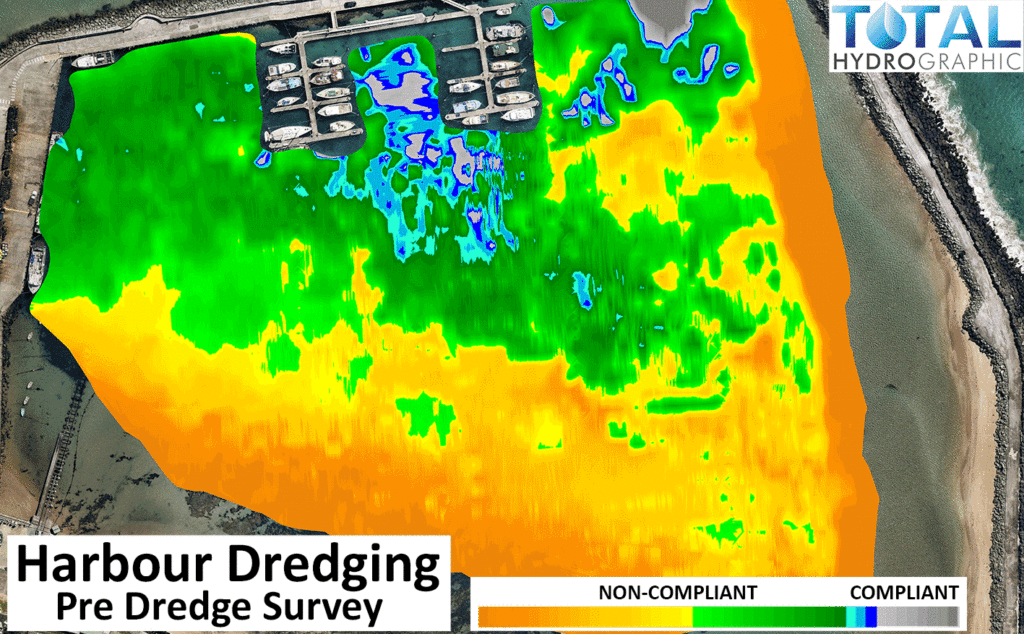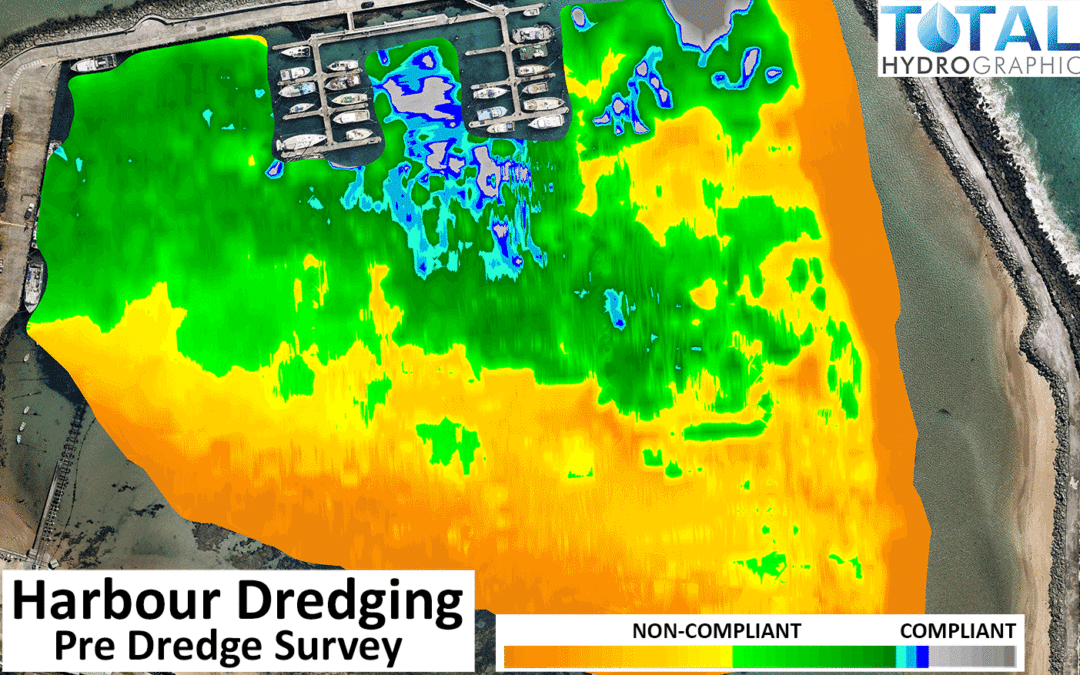Dredging simply put is the process of removing the debris & sediments from the bottom of lakes, rivers, harbours and other water bodies. Over time sand, silt and debris wash up into water bodies such as lakes & harbours and settle on the floors. Filling them up and making the channels impassable. Clearing of this is called dredging. To ensure the integrity of the harbours, lakes and rivers is maintained, regular surveys need to be done to see the levels of settlement. These surveys are done to get a clear understanding of what lies beneath the water line.
Why is Dredging important?

Dredging is performed for several reasons. With the most common one being the maintenance of or increasing the depth of navigation channels, anchorages, or berthing areas. This is done to ensure ships have a safe and clear passage to navigate the channel and have the appropriate levels of under keel clearance. Larger ships also need certain levels of water to float and travel or anchor in harbours and berths. Some of the other reasons to engage in dredging are to improve existing water features, reshaping land/ water bodies. Altering drainage, dam construction or to recover valuable mineral deposits. In some instances it is done to accommodate marine life for commercial value.
From ancient times to today, dredging has been a vital activity. Authorities engage in it to maintain and build harbours, ports and wharfs to encourage trade and attract merchants to their shores. Dredging goes back to the ancient Egyptian times where the Nile was channelled, and wharfs built. There was extensive harbour building in the eastern Mediterranean from 1000 BC and the disturbed sediment layers gives evidence of dredging. At Marseille, dredging phases are recorded from the third century BC onwards, the most extensive during the first century AD. The remains of three dredging boats have been unearthed; they were abandoned at the bottom of the harbour during the first and second centuries AD.
How to Dredge?
There are several different ways to engage in dredging and in modern times some very fancy equipment has been developed to monitor and make this process easier. Some of the type of dredging machines are Suction dredgers, Mechanical dredgers to name the 2 most common ones. To ensure the right amount of sediments are dredged, we need to conduct a survey and get a good picture of what lies beneath the water. There are several ways to do this in the modern world. Conducting a multi beam survey or single beam survey will provide the needed data to engage in this activity. At Total Hydrographic we are hydrographic experts who can help you survey your water bodies and provide the required data to ensure the dredging process is as quick as can be and executed to the correct depths.


Recent Comments